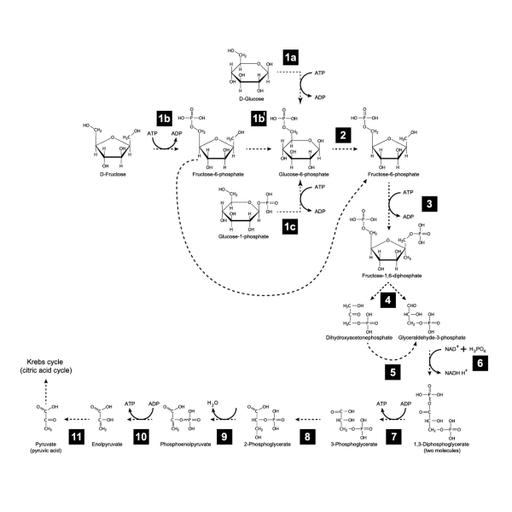Glycolysis
Presentations | English
A process in which glucose (sugar) is partially broken down by cells in enzyme reactions that do not need oxygen. Glycolysis is one method that cells use to produce energy. When glycolysis is linked with other enzyme reactions that use oxygen, more complete breakdown of glucose is possible, and more energy is produced. Glucose is trapped by phosphorylation, with the help of the enzyme hexokinase. Adenosine triphosphate (ATP) is used in this reaction and the product, glucose-6-P, inhibits hexokinase. Glycolysis takes place in 10 steps, five of which are in the preparatory phase and five are in the pay-off phase. Phosphofructokinase is the rate-limiting enzyme. ATP is generated by substrate-level phosphorylation by high-energy compounds, such as 1,3-bisphosphoglycerate and phosphoenolpyruvate. Glycolysis is used by all cells in the body for energy generation. The final product of glycolysis is pyruvate in aerobic settings and lactate in anaerobic conditions. Pyruvate enters the Krebs cycle for further energy production. When both the energy-requiring and energy-releasing phase of glycolysis have occurred, the products of the overall reaction include two pyruvate molecules, two ATP molecules, and two NADH molecules. In the presence of oxygen, the pyruvate molecules can be broken down via oxidation in cellular respiration to form more energy in the form of ATP and carbon dioxide. The NADH molecules cycle back and forth between the oxidized and reduce states (NAD+ and NADH).

Free
PPTX (51 Slides)
Glycolysis
Presentations | English
